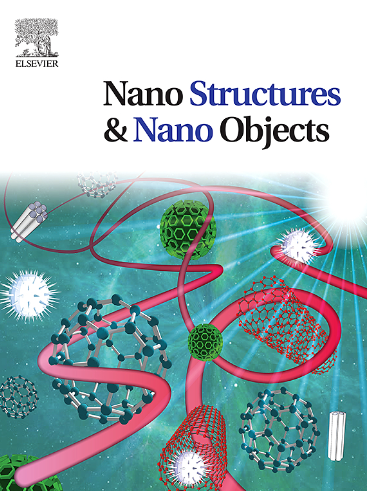Numerical simulation of steady incompressible flow of Maxwell hybrid nanofluid (MgO−Ag/H2O) with thermal and flow behavior analysis
IF 5.45
Q1 Physics and Astronomy
引用次数: 0
Abstract
This paper examines the flow and heat transfer characteristics of a hybrid nanofluid (HNF) over a radially stretching sheet under the applied magnetic field with heat transfer. The main objective is to investigate the consequence of the magnetic field strength, heat transfer, and non-Newtonian behavior on the velocity and thermal distribution of the Maxwell hybrid nanofluid (MHNF). The momentum equation captures the contribution due to the magnetic field and heat transfer along with the non-Newtonian viscous dissipation effect. Additionally, the energy equation is formulated to reflect heat transfer dynamics including thermal conduction, viscous dissipation, and a source term. The study also considers the thermophysical properties of the nanofluid, which are dynamic viscosity, density, specific heat, and thermal conductivity modeled through nanoparticle volume fractions. Boundary conditions at the wall and infinite distance are also provided for velocity and temperature profiles. Properties of hybrid nanofluids are computed through established mixing models considering both interactions of nanoparticles dispersed into a base fluid-water and water-based and nanoparticles. The proposed model is aimed at providing insight into the effects of magnetic field strength, heat transfer, and non-Newtonian behavior on the flow and heat transfer features of HNFs. The results show that an increased magnetic field parameter reduces the velocity profile caused by the Lorentz force-induced effect but increases the temperature profile through heat transfer. The slip parameter aids fluid motion by reducing drag but with a higher volume fraction of nanoparticles, thermal conductivity is enhanced while velocity decreases due to an increase in viscosity.
求助全文
约1分钟内获得全文
求助全文
来源期刊

Nano-Structures & Nano-Objects
Physics and Astronomy-Condensed Matter Physics
CiteScore
9.20
自引率
0.00%
发文量
60
审稿时长
22 days
期刊介绍:
Nano-Structures & Nano-Objects is a new journal devoted to all aspects of the synthesis and the properties of this new flourishing domain. The journal is devoted to novel architectures at the nano-level with an emphasis on new synthesis and characterization methods. The journal is focused on the objects rather than on their applications. However, the research for new applications of original nano-structures & nano-objects in various fields such as nano-electronics, energy conversion, catalysis, drug delivery and nano-medicine is also welcome. The scope of Nano-Structures & Nano-Objects involves: -Metal and alloy nanoparticles with complex nanostructures such as shape control, core-shell and dumbells -Oxide nanoparticles and nanostructures, with complex oxide/metal, oxide/surface and oxide /organic interfaces -Inorganic semi-conducting nanoparticles (quantum dots) with an emphasis on new phases, structures, shapes and complexity -Nanostructures involving molecular inorganic species such as nanoparticles of coordination compounds, molecular magnets, spin transition nanoparticles etc. or organic nano-objects, in particular for molecular electronics -Nanostructured materials such as nano-MOFs and nano-zeolites -Hetero-junctions between molecules and nano-objects, between different nano-objects & nanostructures or between nano-objects & nanostructures and surfaces -Methods of characterization specific of the nano size or adapted for the nano size such as X-ray and neutron scattering, light scattering, NMR, Raman, Plasmonics, near field microscopies, various TEM and SEM techniques, magnetic studies, etc .
 求助内容:
求助内容: 应助结果提醒方式:
应助结果提醒方式:


